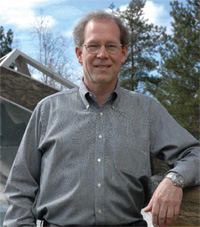 Laurentian University is proposing to establish a school of mines that will offer a world-class education in mining.
Laurentian University is proposing to establish a school of mines that will offer a world-class education in mining.
“The idea of having a school of mines has been around for a very long time, possibly 20 to 25 years,” said Dr. Michael Lesher, the university’s director of mining initiatives. “The main goal is to promote all the programs we are already offering. The industry is extremely supportive and many are telling us they thought we were already doing it.”
The drive to act now is motivated by a strategic planning process to differentiate Laurentian from other Canadian universities.
University president Dominic Giroux believes Laurentian has an opportunity to focus its resources in an area it excels in already. “We identified five areas for research,” he said. “One of them was underground mining and mineral resources.”
The focus of the school would be on developing the scientific, technical, socio-economic and management skills required for exploration, engineering and environmental professionals. It would strive to become the world’s leading mining-related education, research and innovation centre providing expertise across the entire life cycle of mining, including corporate responsibility, occupational health and safety and sustainability practices.
The school would not be structured like the other schools of medicine or architecture. “It would operate more like the Graduate School and include existing mining related programs such as earth sciences and mining engineering, as well as some aspects of economics and environmental studies. It would strengthen and improve programs. We can attract high-calibre students and more research money,” said Lesher. The disciplines would retain their existing administrative structure, but include faculty who have expertise related to mining.
Some of the programs the school could offer include Aboriginal engagement and consultation, mineral exploration, underground mine design and planning, mineral processing, cultural, economic and environmental sustainability, environmental rehabilitation and monitoring, occupational health and safety and mine management.
Proponents of the school have identified Aboriginal engagement and consultation as one of several new programs they would like to offer.
“We would like to provide a place where Aboriginal people can come and learn about mining. We will educate mining people about what Aboriginal people need and expect, then educate Aboriginal people about the mining industry for mutual benefit,” said Lesher.
Professional education, including certificate courses and workshops, would be another valued addition to the school. “We are approaching this with the belief that learning is a lifelong experience,” said Lesher. Another possibility would be offering an MBA program in mining that would give students an opportunity to focus on the business management side of the industry and work on case studies from mining companies.
The school could also offer programs in occupational health and safety.
“Discussions with industry indicate that there are opportunities on the teaching side for post graduate and professional degrees as well as certificate and workshop programs,” said Giroux. “The spirit of establishing a school of mines is to bring together faculty members from various disciplines and to be accredited with the school of mines. The main benefit is to provide flexibility.”
The structure of the school is not so much about a physical location as it is about allowing faculty to contribute to programs and focus on mining related research and case studies.
The idea still needs approval from the university senate.
Giroux expects the school to fill industry gaps, especially the need for more specialized professionals. He also expects the university to be better recognized for its expertise both nationally and internationally.
Other mining schools around the world started as stand-alone mining schools, but have now been absorbed into broader post-secondary institutions. For example, the Haileybury School of Mines was established in 1912 and was eventually absorbed by Northern College of Applied Arts in Timmins. The Colorado School of Mines evolved into a full-fledged university and has become equivalent to an Ivey League school in terms of the quality of its students.
“We want to improve the quality of what we do and what our students are able to do and we hope to attract more students,” said Lesher. “We want Laurentian to become known as one of the top places in the world to come to if you want to study anything related to mining.”
Proponents of the school expect a significant increase in enrollment and the hiring of more professors. It’s also hoped that a school of mines will be able to attract more funds for research chairs, fellowships and bursaries.


